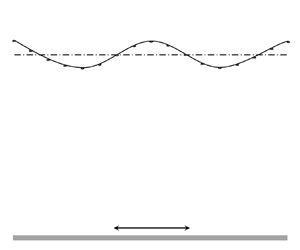Published online by Cambridge University Press: 23 October 2023

The linear instability of viscoelastic film with insoluble surfactants on an oscillating plane for disturbances with arbitrary wavenumbers is investigated. The combined effects of viscoelastic and insoluble surfactants on the instability are described using Floquet theory. For long-wavelength instability, the solution in the limit of long wave perturbations is obtained by the asymptotic expansion method. The results show that the presence of viscoelastic film shifts the stability boundaries to the low-frequency region in the absence of gravity when the imposed frequency is less than 6. The U-shaped neutral curves with separation bandwidth appear in the presence of gravity. The finite-wavelength instability is solved numerically based on the Chebyshev spectral collocation method. Different from the previous results, a new branch point with special structure of a neutral curve is detected for clean-surface film. Results show that the presence of the surfactants will decrease the unstable frequency bandwidth and increase the critical Reynolds number. Both the travelling-wave mode and standing-wave mode are found due to the existence of surface surfactants. For high-frequency oscillation, the viscoelastic parameter may significantly destabilize the flow and the instability is determined by the finite-wavelength mode over a relatively large frequency range.